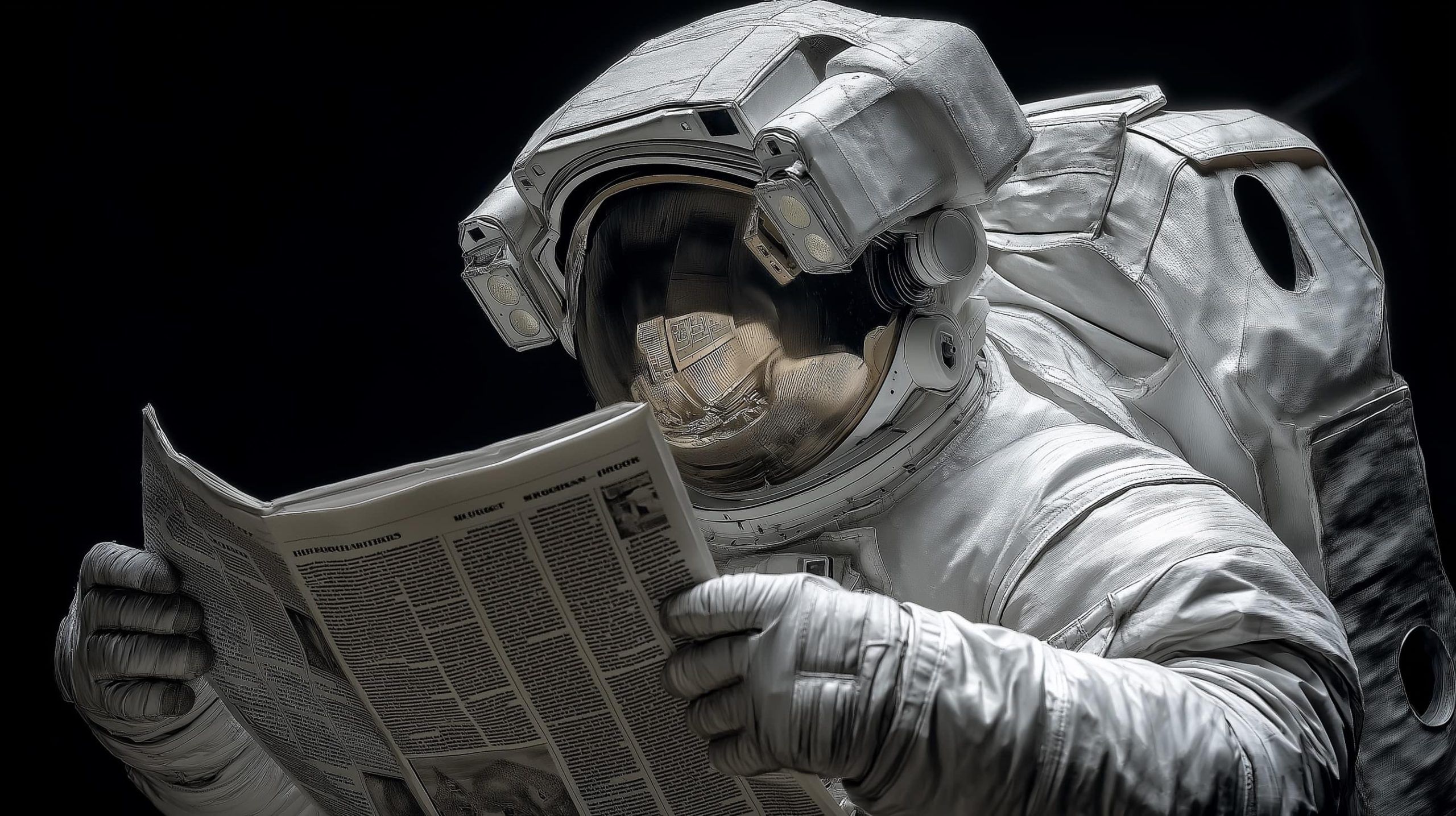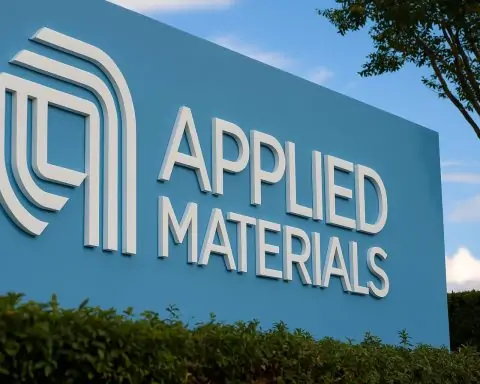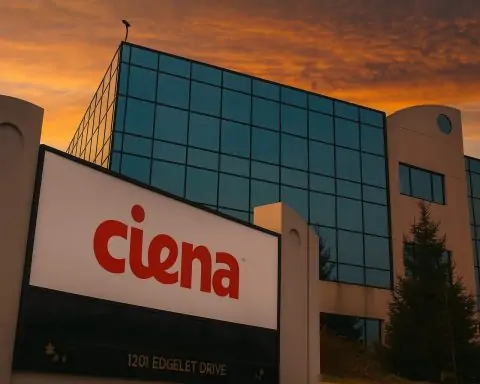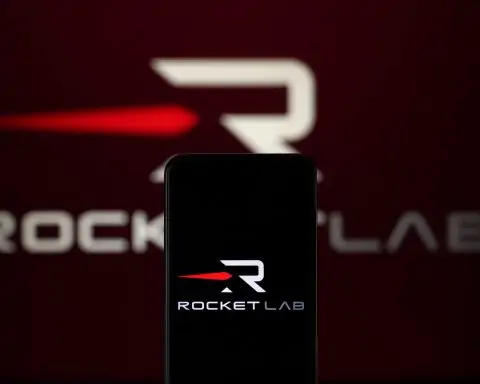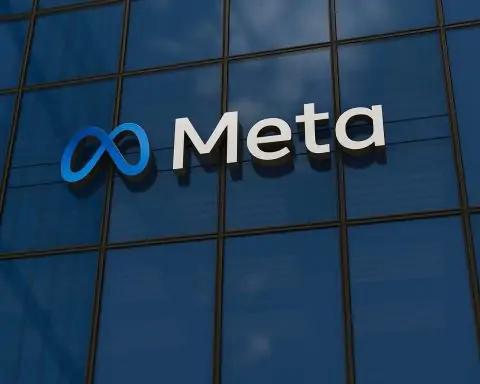- NASA’s Crew-10 astronauts Anne McClain, Nichole Ayers, Takuya Onishi, and Kirill Peskov completed a 146-day mission with a splashdown off the California coast at 11:33 a.m. ET on Aug. 9, 2025, the first crewed West Coast splashdown under NASA’s Commercial Crew Program.
- China completed the first full-scale test of the Lanyue (“Embrace the Moon”) crewed lunar lander in Hebei on Aug. 6, 2025, validating its ascent and descent engines ahead of a 2030 lunar mission.
- ULA’s Vulcan rocket is slated for its first national-security launch with mission USSF-106 as early as Aug. 12, 2025, marking Vulcan’s inaugural national-security and Post-Certification Mission.
- Europe’s Ariane 6 is scheduled for its inaugural flight on Aug. 12, 2025 from Kourou, carrying MetOp-SG‑A1 and Copernicus Sentinel-5 to inaugurate Europe’s post-Ariane 5 era.
- Firefly Aerospace began trading on Aug. 7, 2025 after an IPO that raised about $868 million, with shares opening at $70 and a market capitalization around $9.8 billion.
- The UK granted Skyrora a space-launch license on Aug. 5, 2025 to launch up to 16 vertical rockets per year from SaxaVord Spaceport in the Shetland Islands, with first UK launch likely in 2026.
- SpaceX launched 24 Starlink V2 Mini satellites on Aug. 8, 2025 from Vandenberg Air Force Base, marking SpaceX’s first West Coast Starlink flight in nine days and the 97th Falcon 9 launch of 2025.
- Amazon’s Kuiper project saw a 24-satellite Falcon 9 launch attempt (KF-02) on Aug. 7, 2025, rescheduled to Aug. 9 from Cape Canaveral, with a brand-new Falcon 9 booster.
- SpaceX signed a deal with Italy’s Agenzia Spaziale Italiana (ASI) on Aug. 7, 2025 to fly Italian science payloads on Starship’s first Mars missions, including a plant-growth experiment, a meteorological station, and a radiation sensor.
- Jim Lovell, the Apollo 8 lunar-orbit veteran and Apollo 13 commander, died at age 97 on Aug. 8, 2025, leaving a legacy of leading the famous “successful failure” return from the Moon.
NASA’s Crew-10 Makes Historic Splashdown on West Coast
NASA’s SpaceX Crew-10 astronauts are back on Earth after undocking from the International Space Station on Friday, Aug. 8, and splashing down off California on Saturday morning [1] [2]. This marks the first-ever crewed splashdown off the U.S. West Coast under NASA’s Commercial Crew Program [3]. Commander Anne McClain, pilot Nichole Ayers, JAXA astronaut Takuya Onishi, and Roscosmos cosmonaut Kirill Peskov wrapped up a 146-day science mission in orbit and returned with “important and time-sensitive research” conducted in microgravity [4]. “NASA and SpaceX are proceeding toward return of the agency’s Crew-10 mission… targeting undocking no earlier than 6:05 p.m. EDT, Friday, Aug. 8,” NASA confirmed ahead of the departure [5]. Splashdown occurred at 11:33 a.m. ET on Aug. 9 off the California coast, after which recovery teams swiftly secured the Dragon capsule. Mission managers had closely watched weather and sea states; conditions proved favorable for a safe homecoming [6].
NASA on research return: The crew came back with a trove of experiments, “returning to Earth with important and time-sensitive research” from the space station [7]. This included biological samples and materials science investigations requiring quick handover to scientists on the ground.
China Test-Fires New Crewed Lunar Lander for 2030 Moonshot
China’s space program achieved a major milestone in its drive to put astronauts on the Moon by 2030. On Aug. 6, Chinese engineers completed the first full-scale test of a new crewed lunar lander called “Lanyue” (“Embrace the Moon”) [8] [9]. The test in Hebei province verified the lander’s ascent and descent engines on a test stand designed to simulate lunar surface conditions [10]. “The test involved multiple operational conditions… making it a critical milestone in the development of China’s manned lunar exploration program,” China Manned Space officials said [11]. The Lanyue lander will ferry taikonauts between lunar orbit and the Moon’s surface, doubling as a habitation module, power source, and data hub once on the ground [12]. This progress comes as China races to achieve a crewed lunar landing before the end of the decade, in parallel with NASA’s Artemis program. (NASA plans an Artemis II lunar fly-around in 2026 and a landing with Artemis III in 2027.) A successful Chinese Moon landing would pave the way for an International Lunar Research Station that China aims to build with Russia by 2035 [13].
Launch Industry Ramps Up: ULA Vulcan & Europe’s Ariane 6 on Deck
United Launch Alliance (ULA) is on the cusp of a key debut mission for its next-gen Vulcan rocket. ULA President Tory Bruno confirmed that Vulcan’s first national security launch – carrying a pair of U.S. Space Force payloads (mission USSF-106) – is slated for liftoff as soon as Aug. 12 [14] [15]. “This is the inaugural launch of Vulcan into national security space. It is what we designed this rocket to do,” Bruno said of the high-stakes mission to geosynchronous orbit [16]. The flight will also serve as Vulcan’s required Post-Certification Mission for the U.S. Space Force. ULA hopes to conduct nine launches in 2025 (using Vulcans plus a few remaining Atlas V rockets) and then quickly scale up to about two launches per month by early 2026 [17] [18]. Bruno noted ULA already has a “stockpile” of launch vehicles ready: “We have a stockpile of both Atlases and Vulcans fully built, ready to fly,” he said, expressing confidence in hitting the ambitious cadence [19]. Seven of the last Atlas V boosters are earmarked for Amazon’s Kuiper broadband constellation and others for Boeing’s Starliner crew capsule, ensuring a busy manifest [20].
In Europe, Arianespace is finalizing preparations for the inaugural flight of the Ariane 6 heavy-lift rocket – Europe’s answer to next-gen launch needs. The long-awaited debut is scheduled for Aug. 12 from Kourou, French Guiana [21]. Onboard will be EUMETSAT’s MetOp-SG-A1 weather satellite and the Copernicus Sentinel-5 instrument, the first of a new generation of European Earth observation payloads [22]. In early August, engineers sealed the MetOp-SG-A1 satellite inside Ariane 6’s payload fairing, clearing one of the final checkpoints before launch [23] [24]. This mission inaugurates Europe’s post-Ariane 5 era, with Ariane 6 designed to provide more cost-effective and flexible launch services. “The upcoming launch will give ESA another chance to test the new rocket system while also helping to advance climate science,” the European Space Agency noted, highlighting the satellite’s climate-monitoring mission [25]. If all goes well on Aug. 12, Europe will officially have a new workhorse launcher to maintain independent access to space.
Meanwhile, smaller launch providers are also making strides. Rocket Lab announced it has cleared a key integration review for the U.S. Space Force’s experimental VICTUS HAZE mission, a tactically responsive satellite launch. Remarkably, Rocket Lab built, integrated, and made the small satellite ready for launch just 15 months after contract award, showcasing rapid-turnaround capabilities [26]. “VICTUS HAZE is about more than responsive launch – it’s about ensuring the U.S. can act at the speed of need in a contested space domain,” said Brad Clevenger, president of Rocket Lab National Security, emphasizing the program’s urgency [27]. The mission, expected to launch on an Electron rocket on short notice, will demonstrate the ability to go from call-up to orbit in days – underscoring the launch industry’s shift toward agility and quick deployment for national security needs [28].
Satellite Megaconstellations: Starlink & Kuiper Launches Boost Coverage
It’s been a busy 48 hours for broadband mega-constellations. SpaceX and Amazon pressed forward in their race to blanket the globe in internet satellites. Late on Aug. 8, SpaceX successfully launched a Falcon 9 from California’s Vandenberg Space Force Base carrying 24 of its latest Starlink V2 Mini satellites to polar orbit [29]. This Starlink mission – SpaceX’s first West Coast launch in nine days – added another batch of next-gen satellites to the company’s ever-growing network, and the Falcon 9 first stage nailed a droneship landing for recovery [30]. SpaceX is averaging an unprecedented launch cadence this year: Friday’s Starlink flight marked the 97th Falcon 9 launch of 2025, keeping the company on track to break its annual record [31].
Attention then turned to Amazon’s Project Kuiper, which is gearing up to deploy its own low-Earth orbit internet fleet. On Aug. 7, SpaceX attempted to launch 24 Amazon Kuiper satellites on a dedicated Falcon 9 (the KF-02 mission), the second of at least three Falcon 9 flights Amazon purchased to fast-track its constellation deployment [32]. The initial try was scrubbed for additional vehicle checkouts, but SpaceX rescheduled liftoff for the next morning. On Saturday, Aug. 9, at 9:40 a.m. ET, a Falcon 9 was set to loft the 24 Kuiper satellites from Cape Canaveral [33]. Once successfully in orbit, this batch will bring Amazon’s total satellites on orbit to 102 (adding to 78 already launched on earlier missions) [34]. Amazon aims to build out a constellation of 3,236 satellites in the coming years [35], rivaling SpaceX’s Starlink (which now exceeds 5,000 satellites). Project Kuiper “remains on track” with dozens more launches booked on ULA’s Vulcan, Blue Origin’s New Glenn, and other rockets to meet an FCC deployment deadline [36]. For the KF-02 flight, SpaceX even rolled out a brand-new Falcon 9 booster, underscoring how critical these early Kuiper launches are for Amazon’s schedule [37]. Both Starlink and Kuiper are racing not just to connect the unconnected, but also to secure orbital slots and spectrum – a modern space race playing out far above Earth’s atmosphere.
SpaceX & Italy Partner on Starship Mars Mission Science
SpaceX notched a significant international partnership this week, signing a first-of-its-kind deal with the Italian Space Agency (ASI) to fly Italian science experiments on Starship’s inaugural commercial missions to Mars [38] [39]. ASI President Teodoro Valente announced on Aug. 7 that Italy will contribute multiple research payloads to SpaceX’s first Mars-bound Starship flights, whenever the ambitious missions occur [40]. “The payloads will include, among other things, a plant growth experiment, a meteorological monitoring station and a radiation sensor,” ASI officials said, explaining that the goal is to collect scientific data during Starship’s roughly six-month cruise to Mars and after landing on the Martian surface [41]. SpaceX confirmed the agreement, welcoming Italy as the first customer for Starship’s Red Planet voyages.
Gwynne Shotwell, SpaceX’s President and COO, celebrated the partnership on social media: “Get on board! We are going to Mars! SpaceX is now offering Starship services to the Red Planet. We’re excited to work with the Italian Space Agency on this first-of-its-kind agreement. More to come,” she wrote in an Aug. 7 post [42]. This collaboration gives Italy a head start in Mars research – its experiments will hitch a ride on a privately-operated Mars mission rather than waiting for a dedicated ESA mission. It also marks the first commercial payloads booked for Starship to Mars, a vote of confidence in SpaceX’s super-heavy launch system even before it reaches Earth orbit. Elon Musk’s company is developing Starship with the explicit goal of enabling human Mars settlement, and Musk has floated a 2026 target for the first crewed Mars attempt. While Starship Flight 9 achieved a high-altitude suborbital flight in May [43], the rocket has yet to reach orbit. Still, the ASI deal suggests global interest in leveraging Starship’s huge capacity for deep-space science. As Shotwell hinted, more international partnerships may follow as SpaceX opens a new frontier for commercial Mars exploration.
Industry Shake-Up: Firefly’s Blockbuster IPO and UK’s First Launch License
It’s not just government agencies making news – space startups and regulators hit major milestones as well:
- Firefly Aerospace’s stock blasted off in its Nasdaq debut on Aug. 7, signaling investor excitement for “NewSpace” companies. The Texas-based launch and lunar lander firm (ticker: FLY.O) raised about $868 million in its IPO and saw its shares surge 55% above the offering price on opening day [44] [45]. Firefly’s stock opened at $70 (vs. a $45 IPO price), giving the company a market valuation of roughly $9.8 billion [46]. This marks a stunning turnaround for a venture that faced setbacks early on but has recently racked up a string of successes. “We at Firefly have had a lot of successes toward going public,” Firefly CEO Jason Kim told Reuters on IPO day, citing the company’s “breakthrough Moon landing” five months ago, a rapid-response Pentagon launch in 2023, and a growing line of maneuverable space vehicles for the U.S. Space Force as key achievements fueling investor confidence [47]. Indeed, Firefly in March became the first private enterprise to land a spacecraft on the Moon (delivering a payload for NASA), and its medium-lift Alpha rocket has performed national security missions. Analysts say Firefly’s strong debut reflects bullish sentiment about the space sector, as private firms play an increasingly critical role in government space programs [48] [49]. With the IPO proceeds, Firefly is expected to accelerate development of its larger Beta launch vehicle and expand its lunar lander offerings – further heating up competition in the commercial space arena.
- The United Kingdom granted its first-ever space launch license to a domestic rocket company, marking a historic step for Britain’s nascent launch industry. On Aug. 5, the UK Civil Aviation Authority approved Skyrora, an Edinburgh-based startup, to launch satellites from the country’s planned spaceport in the Shetland Islands, Scotland [50] [51]. The license allows Skyrora to conduct up to 16 vertical launches per year from the SaxaVord Spaceport, once all safety and environmental conditions are met [52]. “Granting a home-grown company, Skyrora, its launch licence is a major milestone for our space sector and our nation,” said CAA Chief Executive Rob Bishton, underscoring the significance for the UK’s space ambitions [53]. The British space market already builds more satellites than any country outside the U.S., and the government is keen to add launch capability to capture a share of the booming $1+ trillion global space economy [54] [55]. However, actually launching from UK soil will have to wait. Skyrora’s rocket (a small orbital launcher) is ready, but SaxaVord’s 2025 manifest is fully booked by other projects, meaning Skyrora’s first UK-based launch likely won’t occur until 2026 [56]. In the interim, Skyrora is exploring options to launch from sites in Australia, Oman, or even Iceland [57]. The first UK vertical launch will be a major morale boost after a failed horizontal launch attempt in 2023. With regulatory green-light in hand, Britain is poised to join the exclusive club of nations with an indigenous orbital launch capability – an achievement decades in the making.
Farewell to Apollo Legend Jim Lovell
Amid the excitement of new developments, the space community also paused to honor one of its heroes. Jim Lovell, the former NASA astronaut best known as commander of the Apollo 13 mission, died this week at age 97. NASA announced Lovell’s passing on Friday, Aug. 8 [58]. Lovell was one of the first humans to orbit the Moon (on Apollo 8 in 1968) and later led 1970’s Apollo 13, the ill-fated Moon landing attempt that he and his crew famously turned into a “successful failure.” When an oxygen tank explosion crippled Apollo 13 en route to the Moon, Lovell’s leadership and calm problem-solving – in concert with mission control – brought the crew safely home, a story immortalized in the 1995 film Apollo 13. He flew four space missions in total but never walked on the Moon, joking that he was “the world’s oldest bridesmaid” of the Apollo program. Upon news of his death, tributes poured in for Lovell’s lifetime of service and inspiration. “A great success in the ability of people to take an almost-certain catastrophe and turn it into a successful recovery,” is how Lovell modestly summed up Apollo 13’s legacy [59]. His example continues to inspire today’s explorers as humanity pushes onward to the Moon, Mars, and beyond.
Sources: Press releases and official reports from NASA [60] [61], ESA [62], and Rocket Lab; news articles from Reuters [63] [64] [65], Spaceflight Now [66] [67], Space.com [68] [69], and others. All information is based on developments reported on August 8–9, 2025.
References
1. www.nasa.gov, 2. ts2.tech, 3. ts2.tech, 4. www.reuters.com, 5. www.nasa.gov, 6. ts2.tech, 7. www.reuters.com, 8. ts2.tech, 9. www.reuters.com, 10. www.reuters.com, 11. www.reuters.com, 12. ts2.tech, 13. ts2.tech, 14. ts2.tech, 15. spaceflightnow.com, 16. spaceflightnow.com, 17. spaceflightnow.com, 18. spaceflightnow.com, 19. spaceflightnow.com, 20. spaceflightnow.com, 21. ts2.tech, 22. ts2.tech, 23. www.space.com, 24. www.space.com, 25. www.space.com, 26. www.businesswire.com, 27. www.businesswire.com, 28. ts2.tech, 29. spaceflightnow.com, 30. spaceflightnow.com, 31. www.space.com, 32. ts2.tech, 33. ts2.tech, 34. ts2.tech, 35. ts2.tech, 36. ts2.tech, 37. ts2.tech, 38. ts2.tech, 39. www.space.com, 40. www.space.com, 41. www.space.com, 42. www.space.com, 43. www.space.com, 44. www.reuters.com, 45. www.reuters.com, 46. www.reuters.com, 47. www.reuters.com, 48. www.reuters.com, 49. www.reuters.com, 50. www.reuters.com, 51. www.reuters.com, 52. www.reuters.com, 53. www.reuters.com, 54. www.reuters.com, 55. www.reuters.com, 56. www.reuters.com, 57. www.reuters.com, 58. www.reuters.com, 59. www.reuters.com, 60. www.nasa.gov, 61. www.reuters.com, 62. www.esa.int, 63. www.reuters.com, 64. www.reuters.com, 65. www.reuters.com, 66. spaceflightnow.com, 67. spaceflightnow.com, 68. www.space.com, 69. www.space.com
